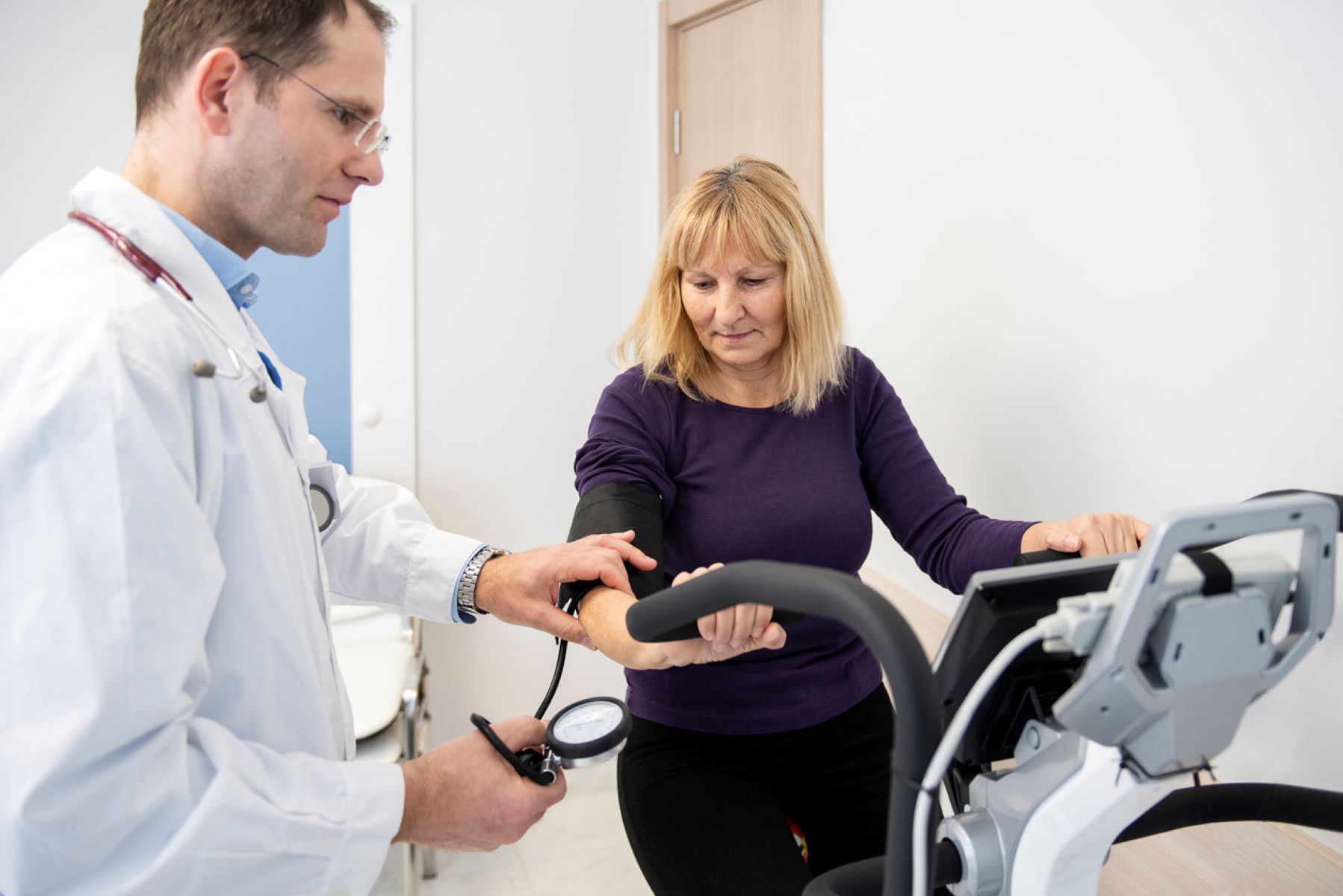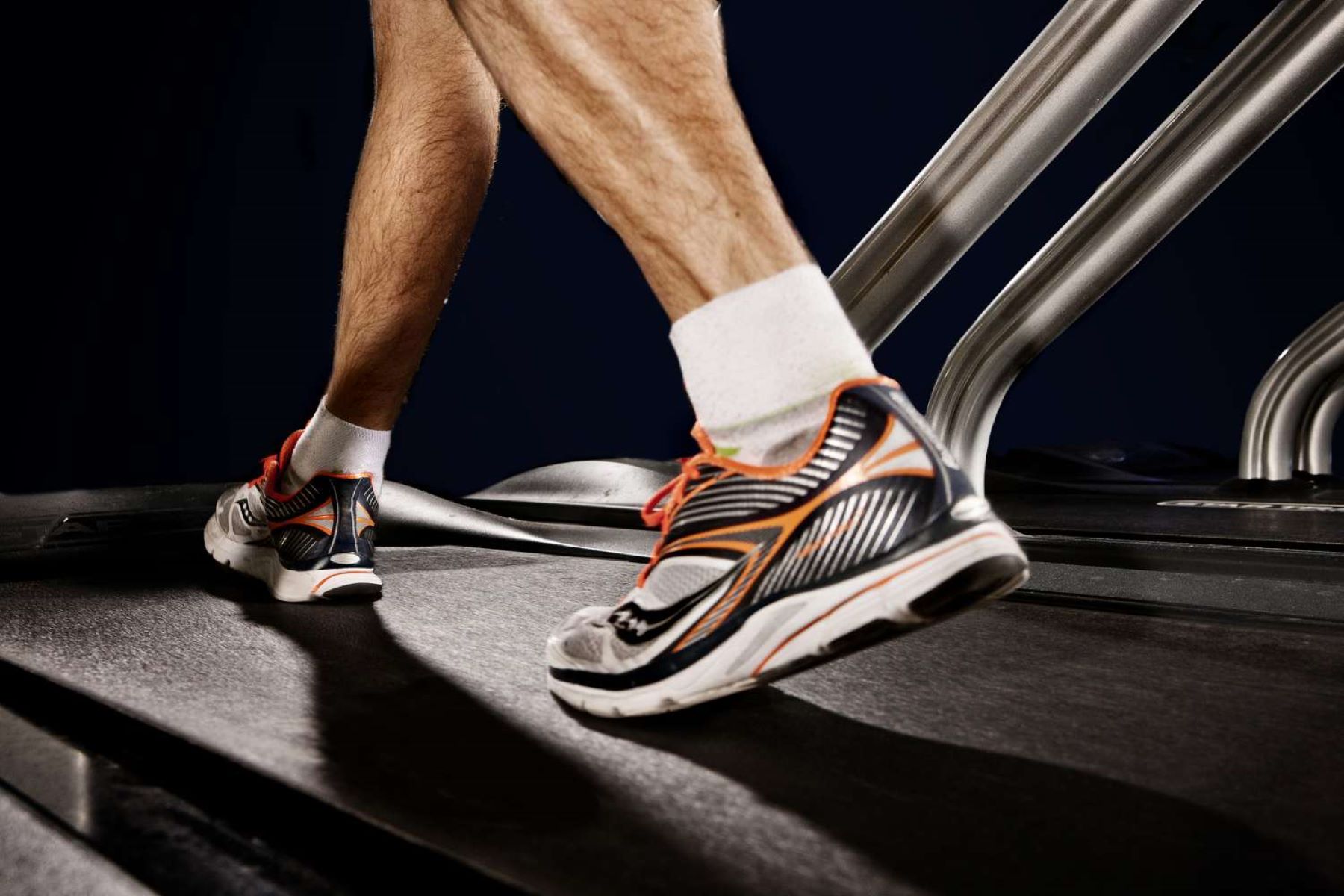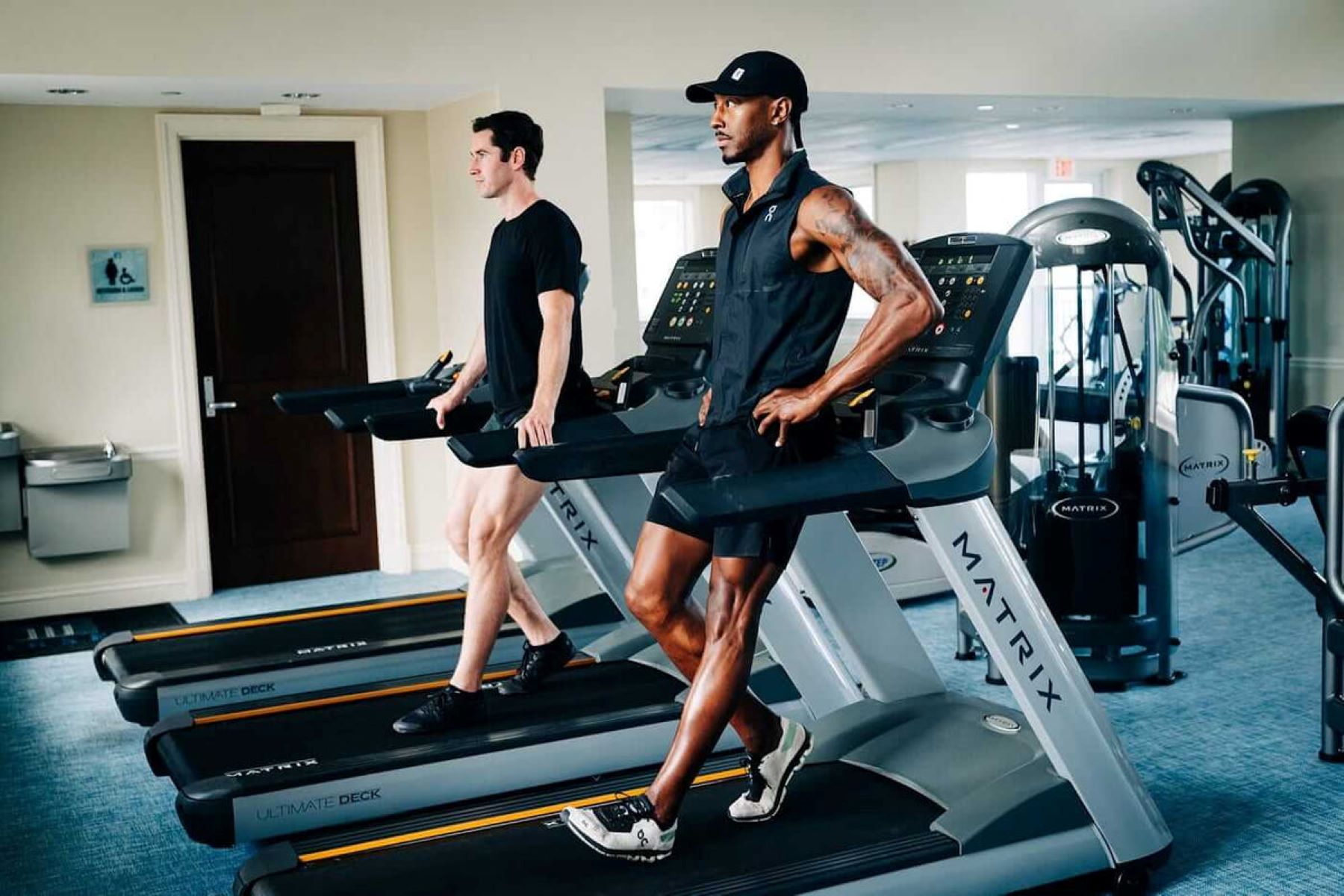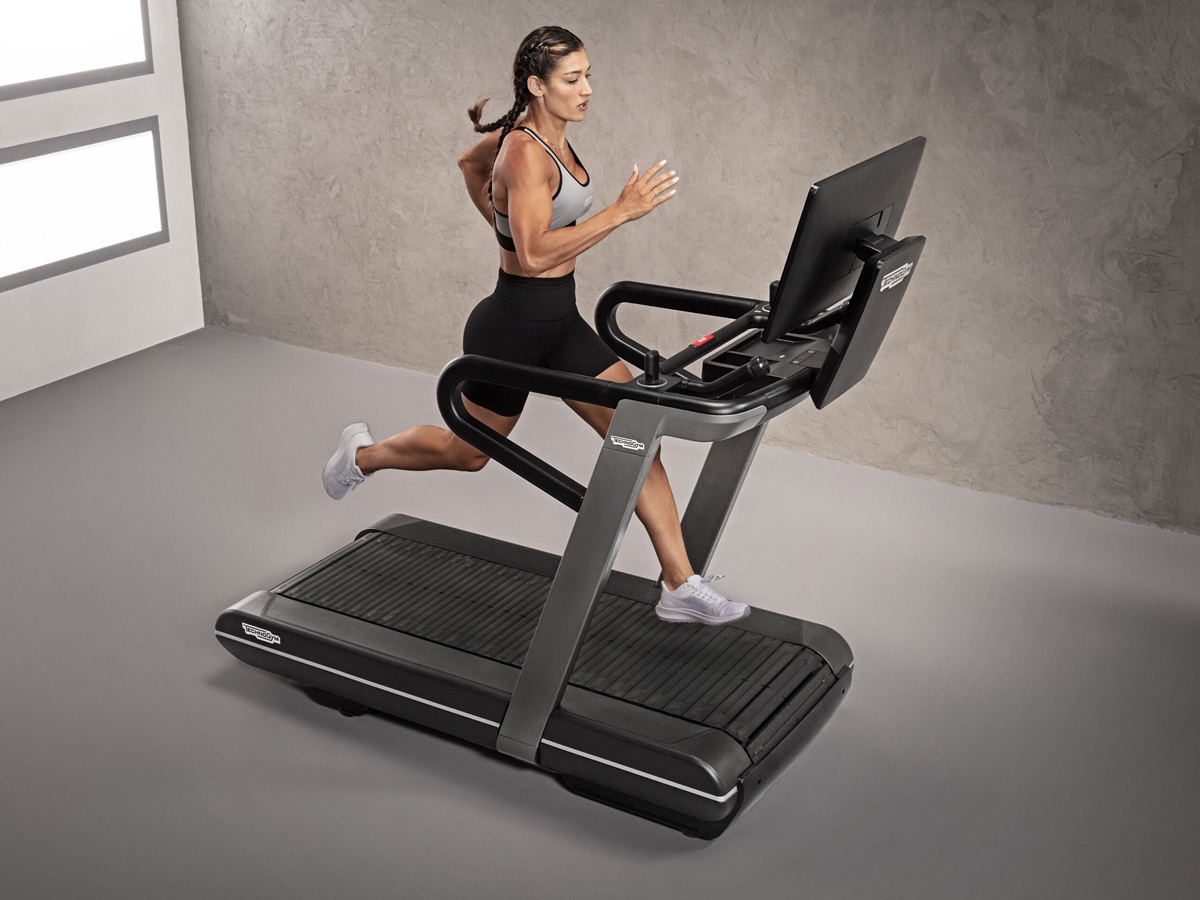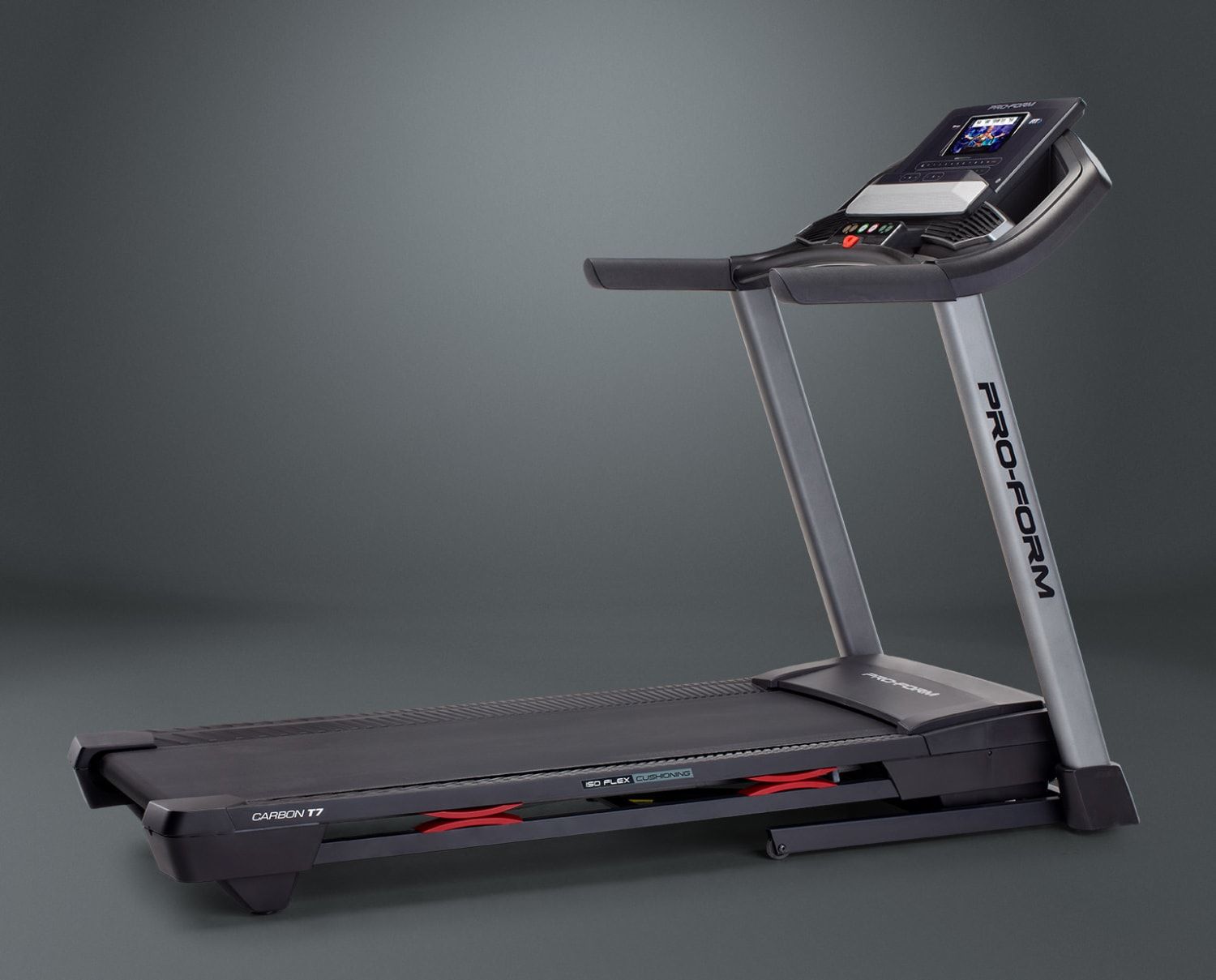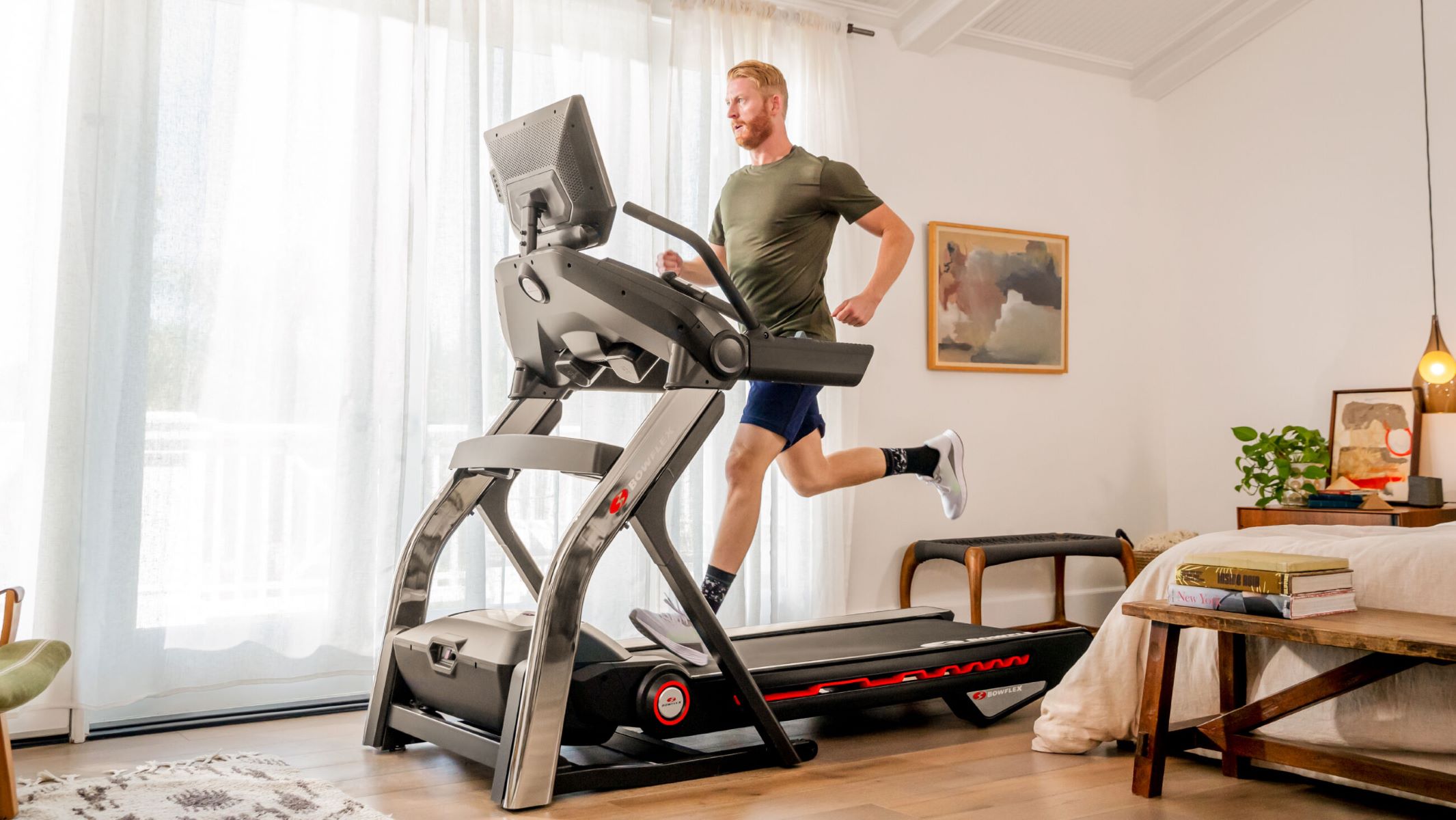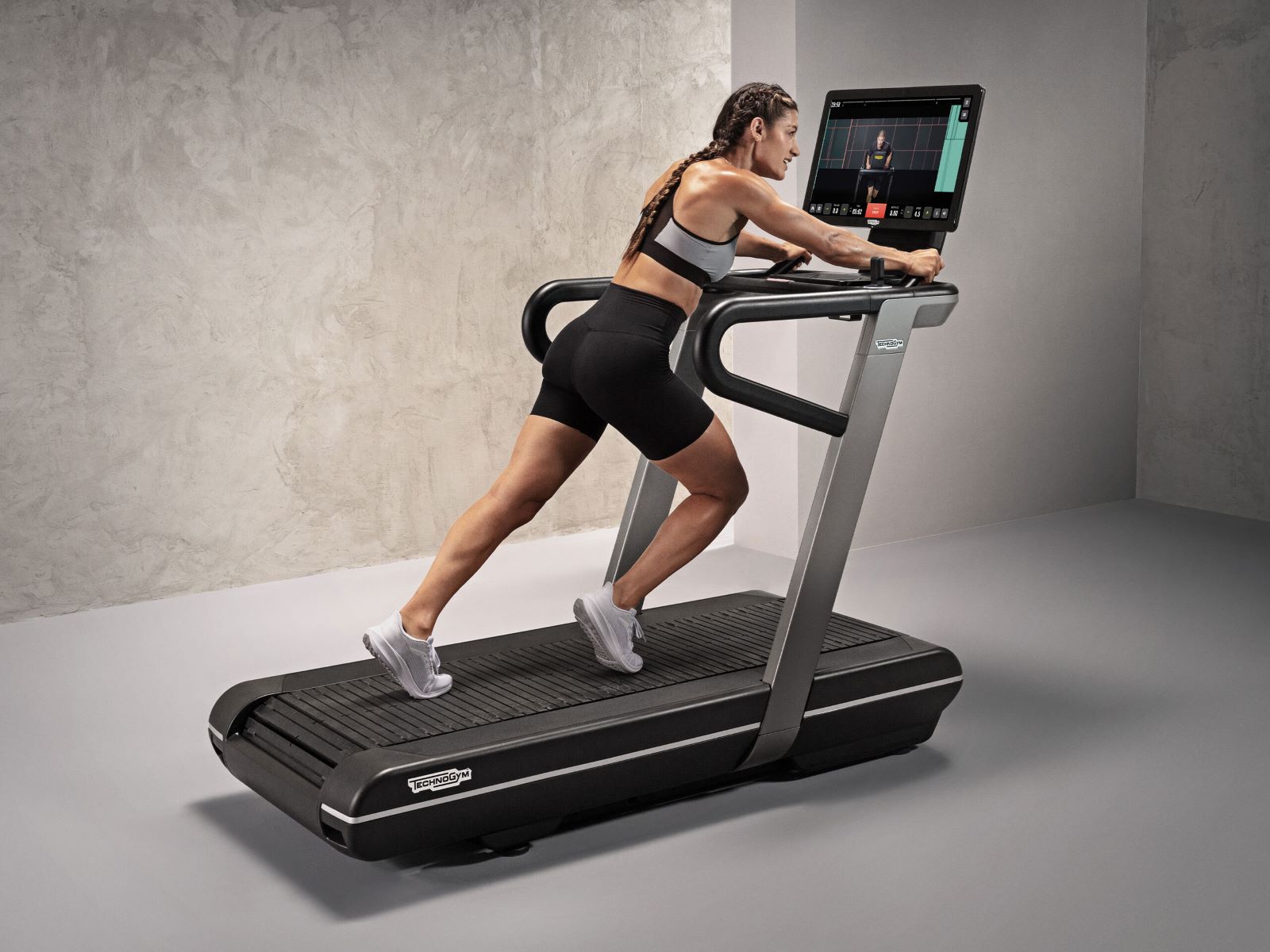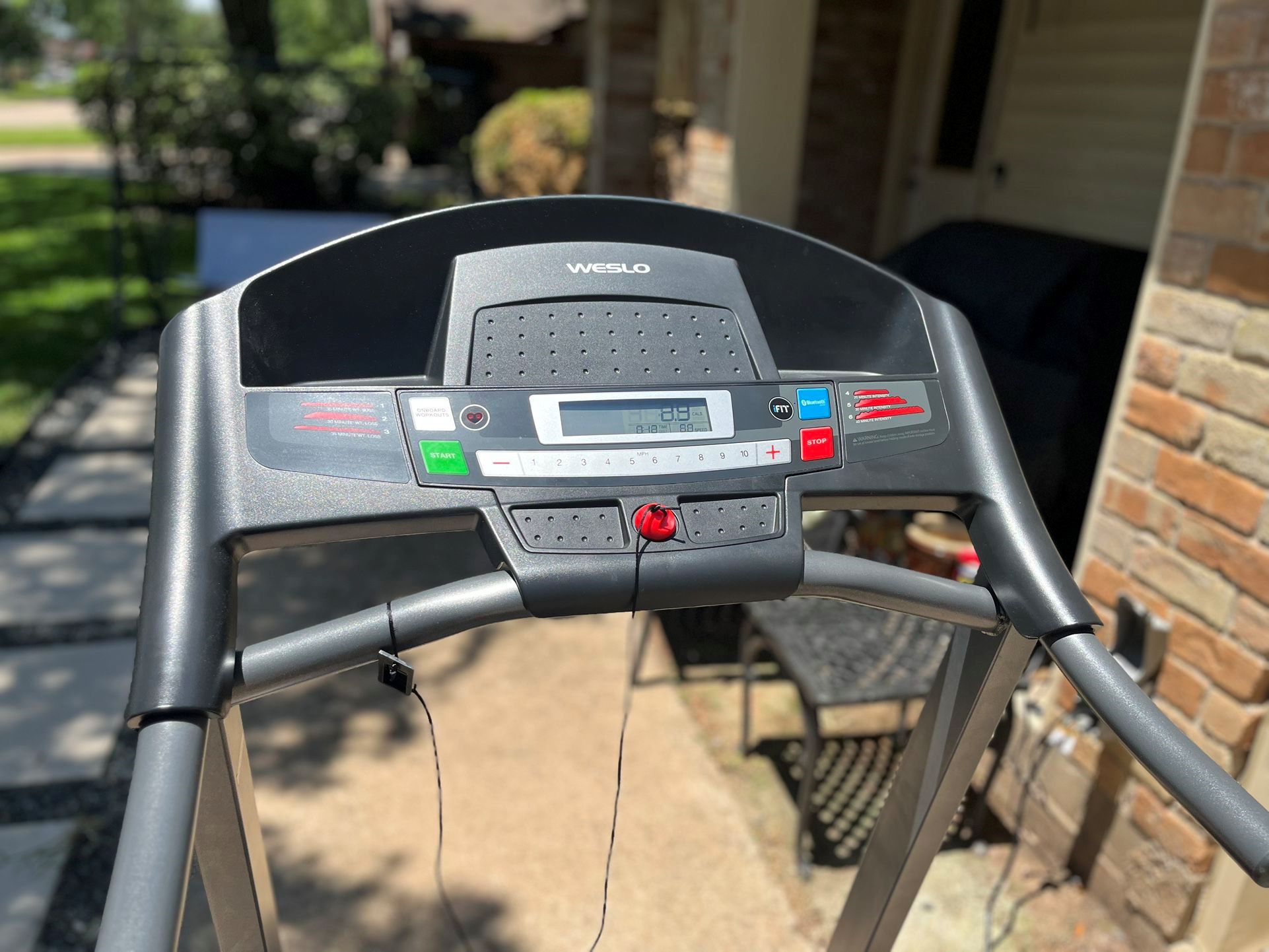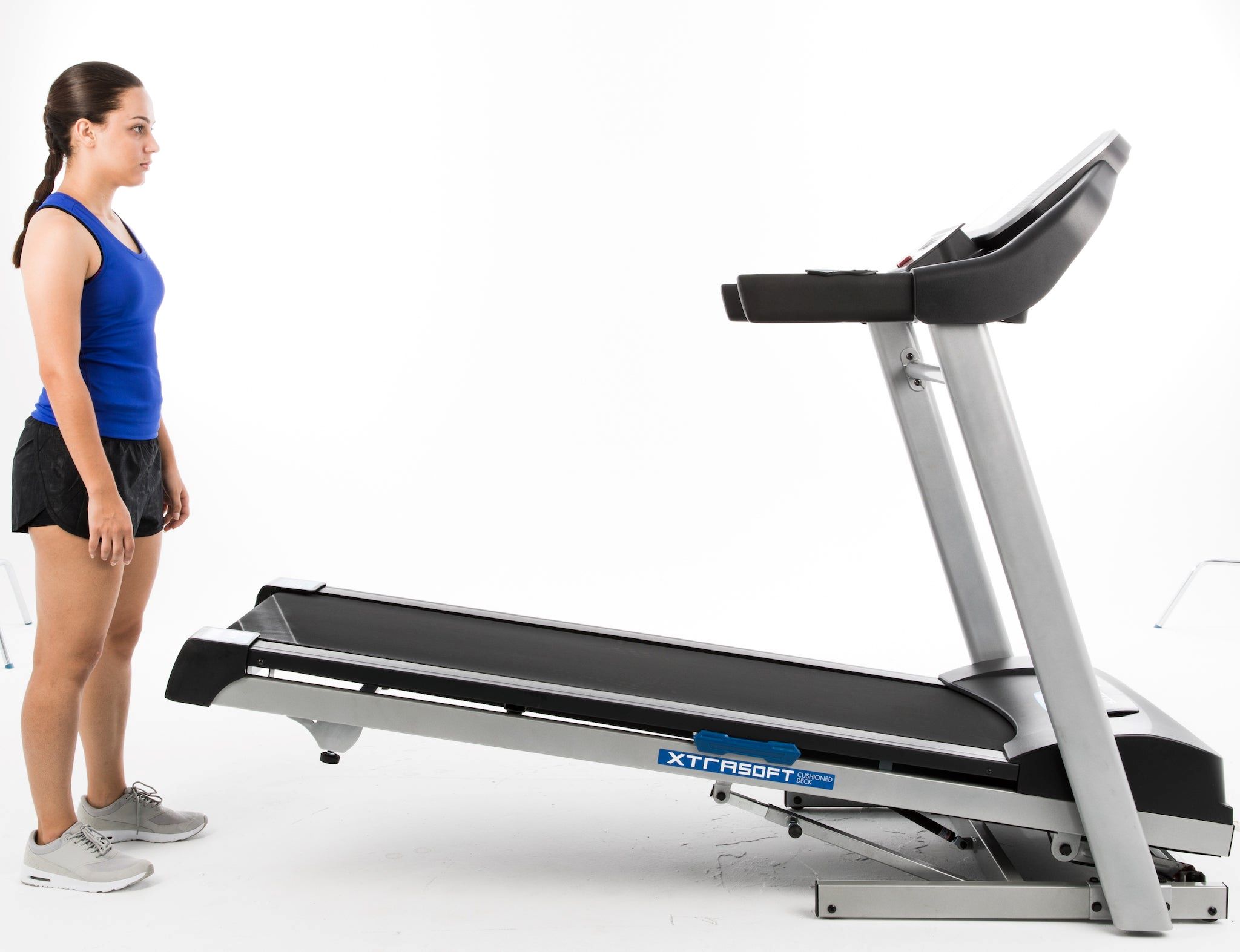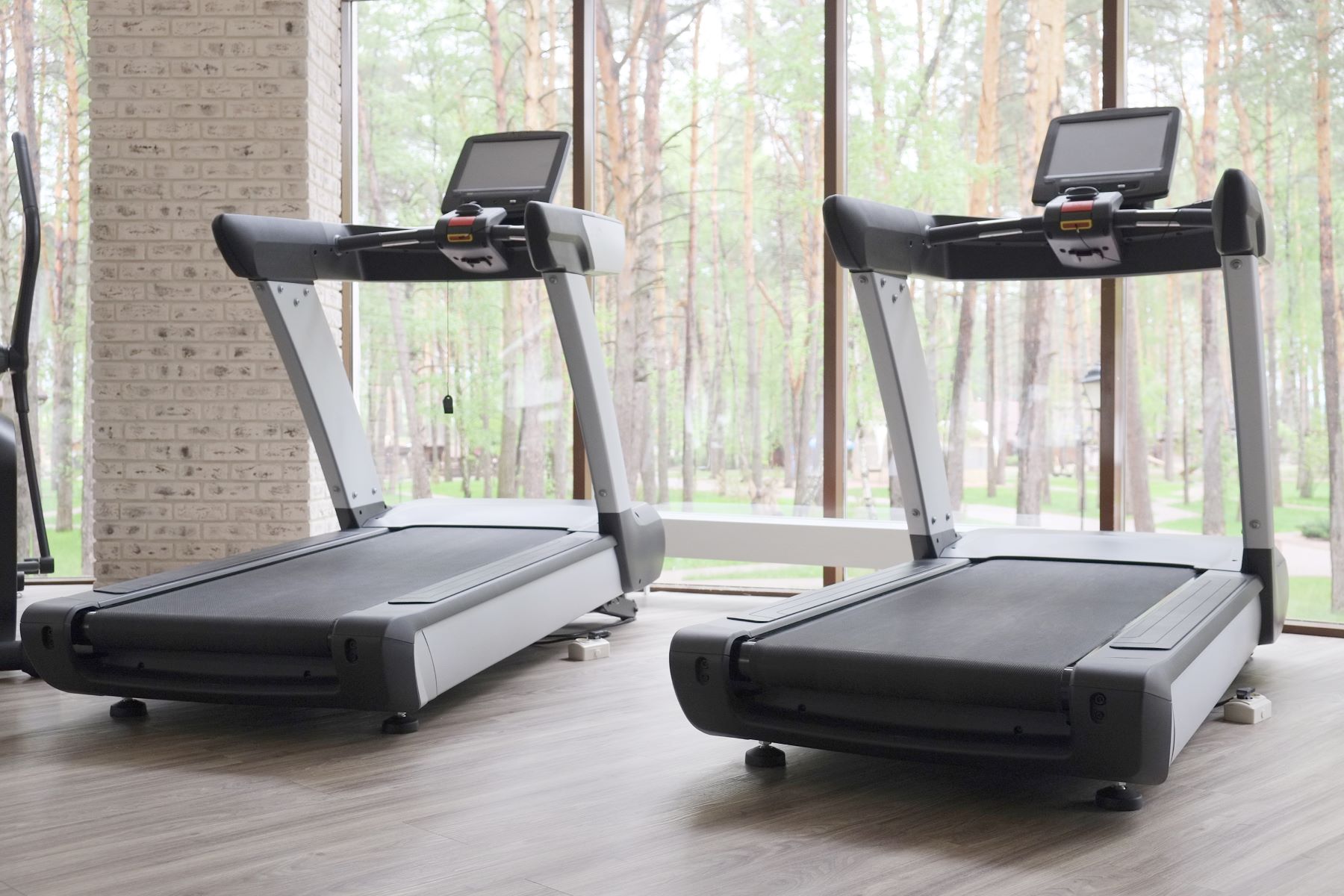

Featured
Why Does Treadmill Keep Stopping
Modified: January 2, 2024
Discover why your treadmill keeps stopping and learn how to fix it with our featured tips and tricks. Get back to your workout routine hassle-free!
Introduction
Welcome to the world of fitness enthusiasts and gym-goers who rely on treadmills for their daily cardio workouts. Treadmills are a convenient and effective way to stay in shape, but what happens when your trusty treadmill starts acting up and keeps stopping in the middle of your run? It can be frustrating and disruptive to your workout routine, but fear not, as we’re here to shed light on the common reasons behind this issue and provide you with troubleshooting steps to get your treadmill up and running smoothly again.
A treadmill may stop for various reasons, ranging from simple maintenance issues to more complex mechanical malfunctions. Understanding the underlying causes can help you diagnose the problem and take appropriate action to fix it. It’s important to note that not all treadmill models are the same, so while some solutions may apply universally, others may be specific to certain brands or models.
In this article, we will walk you through the common reasons why your treadmill may be stopping unexpectedly and provide you with troubleshooting steps to address these issues. By the end of this article, you’ll be equipped with the knowledge and know-how to diagnose and fix the problem, allowing you to get back to your cardio routine without any interruptions.
Common Reasons for Treadmill Stopping
When your treadmill keeps stopping, it’s crucial to identify the root cause so that you can effectively address the issue. Let’s explore the most common reasons why treadmills stop unexpectedly:
- Overheating of the Motor: Intense usage or lack of proper airflow can cause the motor to overheat, triggering a safety feature that shuts down the treadmill. This typically happens when the motor is overworked or when there is a buildup of dust and dirt.
- Belt Slippage: If your treadmill belt is loose or worn out, it can slip when you’re running or walking, causing the treadmill to come to a halt. This may require adjusting the tension or replacing the belt if it is damaged.
- Faulty Motor Controller: The motor controller regulates the speed and power of the treadmill. If it malfunctions, the treadmill may stop suddenly. This issue often requires professional assistance to diagnose and replace the faulty component.
- Safety Features Activation: Modern treadmills are equipped with safety features such as an emergency stop button or a safety key. If these features are activated due to accidental button presses or if the safety key becomes dislodged, the treadmill will automatically stop.
- Power Supply Issues: An unstable power supply or a faulty power cord can cause the treadmill to stop working. Make sure the treadmill is properly plugged in and try connecting it to a different power source to rule out any power-related issues.
- Inadequate Lubrication: Insufficient lubrication between the treadmill belt and the deck can lead to increased friction, causing the treadmill to stop abruptly. Regularly lubricating the treadmill can prevent this issue and ensure smooth operation.
- Sensor Malfunction: Treadmills have sensors that detect the user’s speed, heart rate, and other metrics. If these sensors malfunction or become dirty, it can interfere with the treadmill’s operation and cause it to stop unexpectedly.
- Mechanical Problems: Various mechanical components, such as rollers, bearings, or pulleys, can wear out or get damaged, leading to the treadmill stopping. These issues often require professional inspection and repair.
Understanding these common reasons for treadmill stopping can help you narrow down the problem and decide on the appropriate steps to resolve it. In the next section, we will provide troubleshooting steps to help you fix a treadmill that keeps stopping.
Overheating of the Motor
One of the most common reasons why a treadmill may stop unexpectedly is due to the overheating of the motor. The motor is the powerhouse of the treadmill, and if it becomes too hot, it can trigger a safety feature that shuts down the machine to prevent further damage.
There are a few factors that can contribute to the motor overheating:
- Intense Usage: Overusing the treadmill for extended periods without giving it a chance to cool down can cause the motor to overheat. This is particularly common in commercial gym settings where the treadmills endure continuous usage throughout the day.
- Lack of Proper Airflow: Treadmills have cooling fans that help dissipate heat generated by the motor. If these fans are obstructed by dust or debris, or if the treadmill is placed in a confined space with insufficient ventilation, the motor may not receive adequate airflow, leading to overheating.
- Buildup of Dust and Dirt: Over time, dust and dirt can accumulate inside the treadmill, especially around the motor, causing it to overheat. It’s essential to regularly clean your treadmill to prevent this issue.
If your treadmill abruptly stops due to motor overheating, there are a few steps you can take to address the problem:
- Allow Cool-Down Period: When your treadmill shuts down due to overheating, allow it to cool down for at least 15-20 minutes before attempting to use it again.
- Clean the Motor: Remove the motor cover and inspect for any dust or debris. Use a soft brush or compressed air to gently clean the motor and its surrounding areas. This will help improve airflow and prevent further overheating.
- Avoid Intense Continuous Use: If you tend to use the treadmill for long periods, consider incorporating intermittent breaks to give the motor a chance to cool down.
- Check the Cooling Fan: Ensure that the cooling fan is functioning properly and isn’t obstructed. Clean any debris that may be blocking the airflow. If the cooling fan is not working, contact a technician for a replacement.
- Consider Professional Maintenance: If the motor continues to overheat despite your efforts, it may require professional inspection and maintenance. A technician will examine the motor and address any underlying issues that may be causing the overheating.
By following these troubleshooting steps, you can potentially resolve the motor overheating issue and prevent your treadmill from stopping unexpectedly. However, if the problem persists, it’s advisable to seek assistance from a qualified professional to avoid further damage to your treadmill.
Belt Slippage
If your treadmill keeps stopping while in use, belt slippage could be the culprit. The treadmill belt is designed to grip the deck and rotate smoothly as you walk or run. However, if the belt is loose or worn out, it can slip and cause the treadmill to come to a halt unexpectedly.
There are a few reasons why belt slippage may occur:
- Lack of Tension: Over time, the treadmill belt may stretch or become loose, resulting in inadequate tension. This can lead to slippage when you step or run on the belt.
- Worn-Out Belt: With regular use, the treadmill belt can wear out and lose its grip on the deck. This can be due to factors such as friction, age, or lack of proper maintenance.
- Inadequate Lubrication: Proper lubrication between the belt and the deck is essential for smooth operation. If the belt becomes dry and lacks lubrication, it can increase friction and cause slippage.
If you suspect belt slippage is the reason behind your treadmill stopping, here are some troubleshooting steps you can take:
- Check Belt Tension: Refer to your treadmill’s user manual to find instructions on adjusting the belt tension. Most treadmills have an adjustment bolt or knob near the rear roller. Gradually tighten the bolt or knob until you achieve the desired level of tension.
- Inspect and Replace the Belt: Examine the treadmill belt for signs of wear and tear, such as fraying or significant thinning. If the belt is damaged or worn out, it’s time for a replacement. Consult your treadmill’s manual or contact the manufacturer for the appropriate replacement belt.
- Lubricate the Belt and Deck: If the belt appears to be in good condition, it may simply need some lubrication. Use a treadmill-specific lubricant and follow the manufacturer’s instructions to apply it to the belt and deck. This will reduce friction and minimize slippage.
- Inspect the Motor Drive Belt: Some treadmills have a separate motor drive belt that connects the motor to the front roller. If this belt is loose or worn out, it can cause slippage. Check the motor drive belt for any signs of damage or looseness and replace it if necessary.
- Ensure Proper Alignment: Improper belt alignment can also cause slippage. Check if the belt is centered on the deck by adjusting the tracking bolts on each side of the rear roller. Follow your treadmill’s user manual for detailed instructions on belt alignment.
By following these troubleshooting steps, you can effectively address belt slippage and prevent your treadmill from stopping unexpectedly. However, if the issue persists or you are unsure about performing the steps yourself, it’s recommended to consult a professional treadmill technician for further assistance.
Faulty Motor Controller
If your treadmill keeps stopping unexpectedly, it’s possible that the motor controller is the root cause of the issue. The motor controller is responsible for regulating the speed and power of the treadmill motor, ensuring smooth and consistent operation. If the motor controller malfunctions, it can cause the treadmill to stop abruptly during your workout.
Here are some common signs of a faulty motor controller:
- Sudden Stops: If your treadmill comes to a sudden halt without any warning or error messages, it may indicate a problem with the motor controller.
- Inconsistent Speed: Fluctuating or inconsistent speed, even when you set a specific speed level, could be a sign of a malfunctioning motor controller.
- Error Codes: Some treadmills have built-in error codes or display screens that indicate issues with the motor controller. If you see error messages related to speed or motor control, it’s likely a motor controller problem.
- Non-Responsive Buttons: Unresponsive buttons or difficulty adjusting speed settings could indicate a faulty motor controller that is not effectively communicating with the console.
- Burnt Smell: In rare cases, a burnt smell or visual signs of damage, such as melted components or burn marks, may indicate a severe motor controller malfunction.
If you suspect a faulty motor controller as the cause behind your treadmill stopping, here are some troubleshooting steps you can take:
- Reset the Treadmill: Turn off the treadmill and unplug it from the power source for a few minutes. This will reset the motor controller and clear any temporary glitches.
- Check the Wiring: Inspect the wiring connections between the motor controller and other components of the treadmill. Ensure that all connections are secure and free from damage or corrosion.
- Test with a Different Console: If your treadmill has a removable console, try disconnecting it and connecting a different console, if available. If the treadmill works with the new console, it suggests a problem with the original console or its connection to the motor controller.
- Consult the Manufacturer: If the above steps do not resolve the issue, it’s advisable to contact the treadmill manufacturer or seek assistance from a professional technician. They will have the expertise to diagnose and repair or replace the motor controller if needed.
It’s important to note that motor controller issues can be complex and require technical knowledge to diagnose and fix. If you’re uncomfortable working with electrical components or unsure about performing the troubleshooting steps, it’s best to seek professional help to avoid exacerbating the problem.
Safety Features Activation
Modern treadmills come equipped with various safety features to protect users from accidents or injuries. While these safety features are essential, they can sometimes cause your treadmill to stop abruptly during your workout. Understanding the different safety features and how they are activated can help you troubleshoot the issue.
Here are some common safety features that may cause your treadmill to stop:
- Emergency Stop Button: Most treadmills are equipped with a prominent red emergency stop button. Pressing this button will immediately stop the treadmill’s operation to prevent accidents.
- Safety Key: Treadmills often incorporate a safety key system. The safety key attaches to your clothing and connects to the treadmill. If the key becomes dislodged or disconnected, it triggers an automatic stop to ensure your safety.
- Auto Stop Features: Some treadmills have built-in features that automatically stop the treadmill if they sense unusual movements or if no activity is detected for a certain period. These features are designed to prevent accidents when the treadmill is left unattended.
- Heart Rate Monitor: Certain treadmills have heart rate monitoring capabilities, and if your heart rate exceeds a predetermined threshold, the treadmill may automatically stop to prevent overexertion or health risks.
- Other Detection Sensors: High-end treadmills may also have additional sensors, such as those for detecting stride abnormalities or foot placement. If the sensors detect an irregularity, it can trigger an automatic stop.
If your treadmill keeps stopping due to safety features activation, here are some troubleshooting steps to consider:
- Check the Safety Key: Ensure that the safety key is properly installed and securely connected to the treadmill console. If it becomes dislodged during your workout, reattach it and make sure it remains in place.
- Verify the Emergency Stop Button: If you accidentally press the emergency stop button during your workout, simply release it, and the treadmill should resume normal operation.
- Reset the Auto Stop Feature: If the treadmill stops due to inactivity or unusual movements, consult your treadmill’s user manual to learn how to reset or adjust the auto stop feature settings according to your preferences.
- Ensure Proper Placement: Some safety features, such as stride or foot placement sensors, may require proper positioning and alignment on the treadmill. Adjust your posture or foot placement to ensure accurate readings and prevent false activations.
- Consult the User Manual: If you’re unsure about the safety features and how they operate on your specific treadmill model, refer to the user manual or contact the manufacturer for guidance.
By following these troubleshooting steps, you can address issues related to safety features activation and prevent your treadmill from stopping unexpectedly. However, if the problem persists or if you suspect a malfunction with any of the safety features, it’s highly recommended to seek help from a professional technician or contact the manufacturer for further assistance.
Power Supply Issues
Treadmills rely on a stable and adequate power supply to function properly. Problems with the power supply can often lead to the treadmill stopping unexpectedly during your workout. Here are some common power supply issues that may cause your treadmill to stop:
- Unstable Power Source: If the power source you are using for your treadmill is unstable or fluctuating, it can disrupt the treadmill’s operation. This can happen if you’re using a power outlet shared with other high-power-consuming devices or if the electrical wiring in your home is faulty.
- Faulty Power Cord: A damaged or faulty power cord can cause intermittent power supply issues, leading to the treadmill stopping abruptly. Check the power cord for any visible signs of damage or wear, and ensure it is securely connected to both the treadmill and the power outlet.
- Tripped Circuit Breaker: If the circuit breaker for the power outlet you’re using for your treadmill trips, it will cut off power to the treadmill and cause it to stop. Check the circuit breaker panel in your home and reset any tripped breakers if necessary.
- Inadequate Voltage: Treadmills require a specific voltage level to operate correctly. If the voltage supply is inadequate, either due to a low-quality transformer or an incompatible power source, it can result in the treadmill stopping unexpectedly.
- Power Surge: A sudden surge of electrical power can overload the treadmill’s motor or other components, causing it to shut down as a protective measure. This can happen during electrical storms or when there is a sudden increase in power supply.
If you suspect power supply issues are the reason behind your treadmill stopping, here are some troubleshooting steps you can take:
- Use a Dedicated Power Outlet: Ensure that your treadmill is connected to a dedicated power outlet that is not shared with other high-power-consuming devices. This will help stabilize the power supply to your treadmill.
- Inspect the Power Cord: Check the power cord for any visible signs of damage or fraying. If you notice any issues, replace the power cord with a new one that is compatible with your treadmill model.
- Reset the Circuit Breaker: If the circuit breaker for the power outlet has tripped, locate the breaker panel in your home and reset the breaker corresponding to the treadmill’s power outlet.
- Use a Voltage Stabilizer: Consider using a voltage stabilizer or surge protector to protect your treadmill from power fluctuations or sudden surges. These devices help regulate the voltage supply and protect your treadmill’s electrical components.
- Contact an Electrician: If you suspect a problem with your home’s electrical wiring or the power supply, it’s recommended to consult a licensed electrician to assess and fix any issues.
By following these troubleshooting steps, you can effectively address power supply issues and prevent your treadmill from stopping unexpectedly. However, if the problem persists or you’re unsure about dealing with electrical components, it’s best to seek assistance from a professional electrician or contact the manufacturer for further guidance.
Inadequate Lubrication
Inadequate lubrication between the treadmill belt and deck is a common issue that can cause your treadmill to stop unexpectedly. Lubrication is essential for reducing friction and ensuring smooth operation. Over time, the lubricant on the treadmill belt can wear off, leading to increased friction and potential slippage, which can cause the treadmill to come to a halt.
Here are some signs that inadequate lubrication may be the reason behind your treadmill stopping:
- Visible Belt Friction: If you notice the treadmill belt sticking or struggling to move smoothly, it could be an indication of inadequate lubrication.
- Unusual Noise: Excessive friction between the belt and deck due to lack of lubrication can create unusual squeaking or scraping sounds during your workout.
- Increased Wear on the Belt: A dry or under-lubricated belt can wear out more quickly, leading to visible signs of fraying or thinning.
If you suspect inadequate lubrication is causing your treadmill to stop, follow these troubleshooting steps:
- Refer to the User Manual: Consult your treadmill’s user manual to determine the recommended lubrication schedule and the type of lubricant to use. Different treadmills may have specific requirements.
- Prepare the Treadmill for Lubrication: Before applying lubricant, ensure that the treadmill is turned off and unplugged. Use a clean cloth to wipe away any dust or debris from the belt and deck.
- Lubricate the Belt and Deck: Apply the appropriate amount and type of lubricant to the inner surface of the treadmill belt. Follow the instructions provided by the manufacturer to ensure proper application. Be careful not to over-lubricate as it can lead to excess accumulation of lubricant.
- Spread the Lubricant: After applying the lubricant, turn on the treadmill at a low speed, allowing the belt to move for a few minutes. This helps distribute the lubricant evenly across the belt and deck.
- Wipe Excess Lubricant: Using a clean cloth, wipe away any excess lubricant that may have accumulated on the belt or deck. This helps prevent debris from sticking to the excess lubricant.
- Regular Maintenance: Incorporate regular lubrication into your treadmill maintenance routine to ensure optimum performance and prevent future issues related to inadequate lubrication.
By properly lubricating your treadmill’s belt and deck, you can significantly reduce friction, prevent slippage, and ensure smooth operation. Regular maintenance and lubrication will prolong the life of your treadmill and minimize the likelihood of unexpected stops.
Sensor Malfunction
Modern treadmills are equipped with various sensors that monitor and track important metrics such as speed, heart rate, and stride. However, if these sensors malfunction or become dirty, they can interfere with the treadmill’s operation and cause it to stop unexpectedly.
Here are some indicators that a sensor malfunction may be the culprit behind your treadmill stopping:
- Inaccurate Readings: If the treadmill’s display shows erratic or inconsistent readings for speed, heart rate, or other metrics, it could be a sign of sensor malfunction.
- Unresponsive Controls: Malfunctioning sensors can cause unresponsive controls or buttons on the treadmill console, making it difficult to adjust speed or access various functions.
- Intermittent Stops: If the treadmill stops intermittently during your workout, even when there are no apparent issues or error messages, it may indicate a problem with the sensors.
- Visible Sensor Debris: Dust or debris buildup on the sensors can interfere with their accuracy and lead to malfunction. Inspect the sensors for any visible dirt or obstruction.
- Visual Error Codes: Some treadmills come with error codes that indicate sensor-related issues. If you notice specific error codes pointing to a sensor malfunction, it’s likely a sensor problem.
If you suspect a sensor malfunction is causing your treadmill to stop unexpectedly, here are some troubleshooting steps you can take:
- Clean the Sensors: Use a soft, clean cloth or a mild cleaning solution recommended by the treadmill manufacturer to gently wipe away any dirt or debris on the sensors. Be careful not to scratch or damage the sensors in the process.
- Inspect the Sensor Connections: Check the connections between the sensors and the console to ensure they are securely connected. If any connections appear loose or damaged, rectify them or seek professional assistance if necessary.
- Reset the Console: Restart or reset the treadmill console according to the manufacturer’s instructions. This can help recalibrate the sensors and resolve any temporary glitches or errors.
- Consult the User Manual: Refer to the treadmill’s user manual for specific troubleshooting steps related to sensor malfunctions. The manufacturer may provide detailed instructions on resolving sensor-related issues.
- Seek Professional Help: If the sensor problem persists or you’re unsure about performing the troubleshooting steps yourself, it’s advisable to contact the manufacturer’s customer support or a professional treadmill technician for further assistance or possible sensor replacements.
By addressing sensor malfunctions, you can restore the accurate functioning of your treadmill and minimize unexpected stops. Regular cleaning and maintenance of the sensors will help ensure their reliability and longevity.
Mechanical Problems
When a treadmill keeps stopping, it could be due to underlying mechanical problems. Mechanical components can wear out over time or become damaged, leading to disruptions in the treadmill’s operation. Here are some common mechanical issues that may cause your treadmill to stop unexpectedly:
- Worn Rollers: The rollers of a treadmill help move the belt smoothly. Excessive wear or damage to the rollers can disrupt the belt’s movement and cause the treadmill to come to a halt.
- Malfunctioning Bearings: Bearings provide smooth movement for various treadmill parts. If the bearings become worn, rusty, or damaged, they can impede the treadmill’s performance and cause it to stop unexpectedly.
- Loose or Misaligned Components: Over time, the bolts, screws, or other fastening components of a treadmill may become loose. This can result in misalignment of various parts, causing the treadmill to stop or operate erratically.
- Damaged Deck: The deck is the running surface of the treadmill, and if it becomes cracked, warped, or excessively worn, it can cause the belt to slip or come to a sudden halt.
- Faulty Pulleys: Treadmills have pulleys that help drive the belt. If the pulleys are damaged or malfunctioning, it can disrupt the belt’s movement and lead to the treadmill stopping unexpectedly.
- Improper Belt Tension: If the treadmill belt is incorrectly tensioned, either too loose or too tight, it can cause the treadmill to stop. Proper belt tension ensures smooth movement and prevents slippage.
If you suspect mechanical problems are the reason behind your treadmill stopping, follow these troubleshooting steps:
- Inspect and Tighten Fastening Components: Carefully examine the treadmill’s frame, bolts, screws, and other fastening components. Tighten any loose components using the appropriate tools, following the manufacturer’s guidelines.
- Check and Replace Worn Parts: Examine the rollers, bearings, deck, and pulleys for signs of wear or damage. If any of these components appear worn out or damaged, they may need to be replaced. Consult the treadmill’s user manual or professional technicians for proper replacement parts and instructions.
- Align the Belt: Ensure that the treadmill belt is properly aligned on the deck. Refer to the user manual for specific instructions on how to adjust the belt alignment. Proper alignment reduces friction and prevents unexpected stops.
- Adjust Belt Tension: Check the tension of the treadmill belt. Consult the user manual for guidance on adjusting the belt tension to the recommended specifications. Proper belt tension prevents slippage and ensures smooth operation.
- Seek Professional Assistance: If you’re uncertain about performing mechanical repairs or if the problem persists despite your troubleshooting efforts, it is advisable to consult a professional treadmill technician. They have the expertise to diagnose and repair complex mechanical issues.
Addressing mechanical problems is crucial to restore the smooth functioning of your treadmill and prevent unexpected stops. Regular maintenance, including inspections and proper adjustments, can help identify and resolve mechanical issues before they escalate.
Troubleshooting Steps to Fix a Stopping Treadmill
Experiencing a treadmill that keeps stopping can be frustrating, but there are several troubleshooting steps you can take to diagnose and fix the issue. Here are some general steps to help you get your treadmill up and running smoothly again:
- Check the Power Supply: Ensure that the treadmill is properly plugged in and receiving a stable power supply. Make sure the power cord is securely connected, and check for any tripped circuit breakers.
- Clean and Maintain the Treadmill: Regularly clean your treadmill, removing any dust or debris that may have accumulated. Lubricate the belt and deck according to the manufacturer’s recommendations to reduce friction and prevent slippage.
- Inspect and Adjust the Belt Tension: Check the tension of the treadmill belt. If it is too loose or too tight, adjust it following the user manual’s instructions. Proper belt tension ensures smooth movement and prevents unexpected stops.
- Address Overheating Issues: Ensure that the treadmill is placed in a well-ventilated area, free from dust or other obstructions. Clean the motor and check that the cooling fan is functioning properly. Allow the treadmill to cool down if it has been used for an extended period.
- Examine Safety Features: Check if any safety features, such as the emergency stop button or safety key, are activated or malfunctioning. Make sure the safety key is properly connected, and ensure that the emergency stop button is not engaged unintentionally.
- Inspect Sensors and Connections: Clean the sensors and ensure they are free from dirt or obstruction. Check the connections between the sensors and the console to ensure they are securely connected.
- Check for Mechanical Issues: Inspect various mechanical components, such as rollers, bearings, pulleys, and the deck, for signs of wear or damage. Tighten loose components and replace any worn-out or malfunctioning parts.
- Reset or Reboot the Treadmill: Turn off the treadmill, unplug it from the power source, and wait for a few minutes before plugging it back in. This can help reset the treadmill and clear any temporary glitches or errors.
- Refer to the User Manual: Consult your treadmill’s user manual for specific troubleshooting steps and maintenance guidelines. The manufacturer may provide detailed instructions for addressing common issues or error messages.
- Seek Professional Assistance: If the problem persists or if you are unsure about performing the troubleshooting steps yourself, it’s advisable to contact the manufacturer’s customer support or a professional treadmill technician for further assistance.
Each treadmill model may have specific troubleshooting steps tailored to its design and features. By following these general troubleshooting steps and referring to your treadmill’s user manual, you can often identify and resolve the issues causing your treadmill to stop unexpectedly. Remember, regular maintenance and proper care of your treadmill will help prevent future problems and ensure uninterrupted workouts.
Conclusion
A treadmill that keeps stopping can be a frustrating issue, but with proper troubleshooting and maintenance, you can get it back to its smooth operation. We’ve explored the common reasons behind a stopping treadmill, including overheating of the motor, belt slippage, faulty motor controller, safety feature activation, power supply issues, inadequate lubrication, sensor malfunction, and mechanical problems.
By following the troubleshooting steps discussed for each issue, you can diagnose the problem and take appropriate actions to fix it. Regular cleaning, lubrication, and maintenance are crucial in preventing most of these issues and ensuring the longevity of your treadmill.
If you’re unsure about any troubleshooting steps or if the problem persists despite your efforts, it’s recommended to seek assistance from a professional technician or contact the manufacturer’s customer support. These experts can provide specific guidance tailored to your treadmill model and help resolve complex issues.
Remember, a well-maintained treadmill not only ensures uninterrupted workouts but also prolongs the lifespan of your equipment. By taking care of your treadmill, you can continue enjoying effective workouts without the frustration of unexpected stops.
